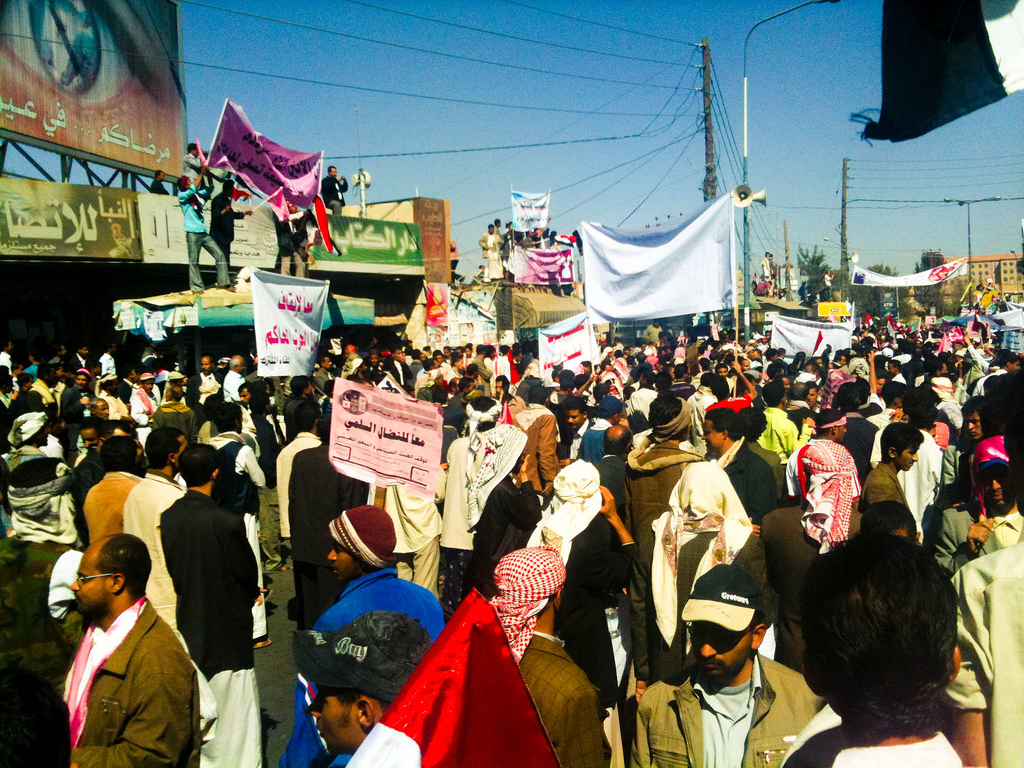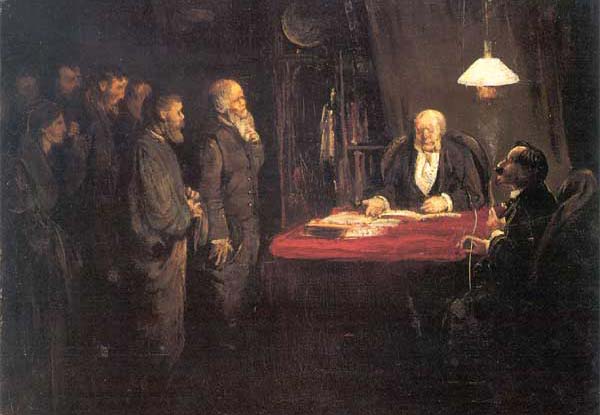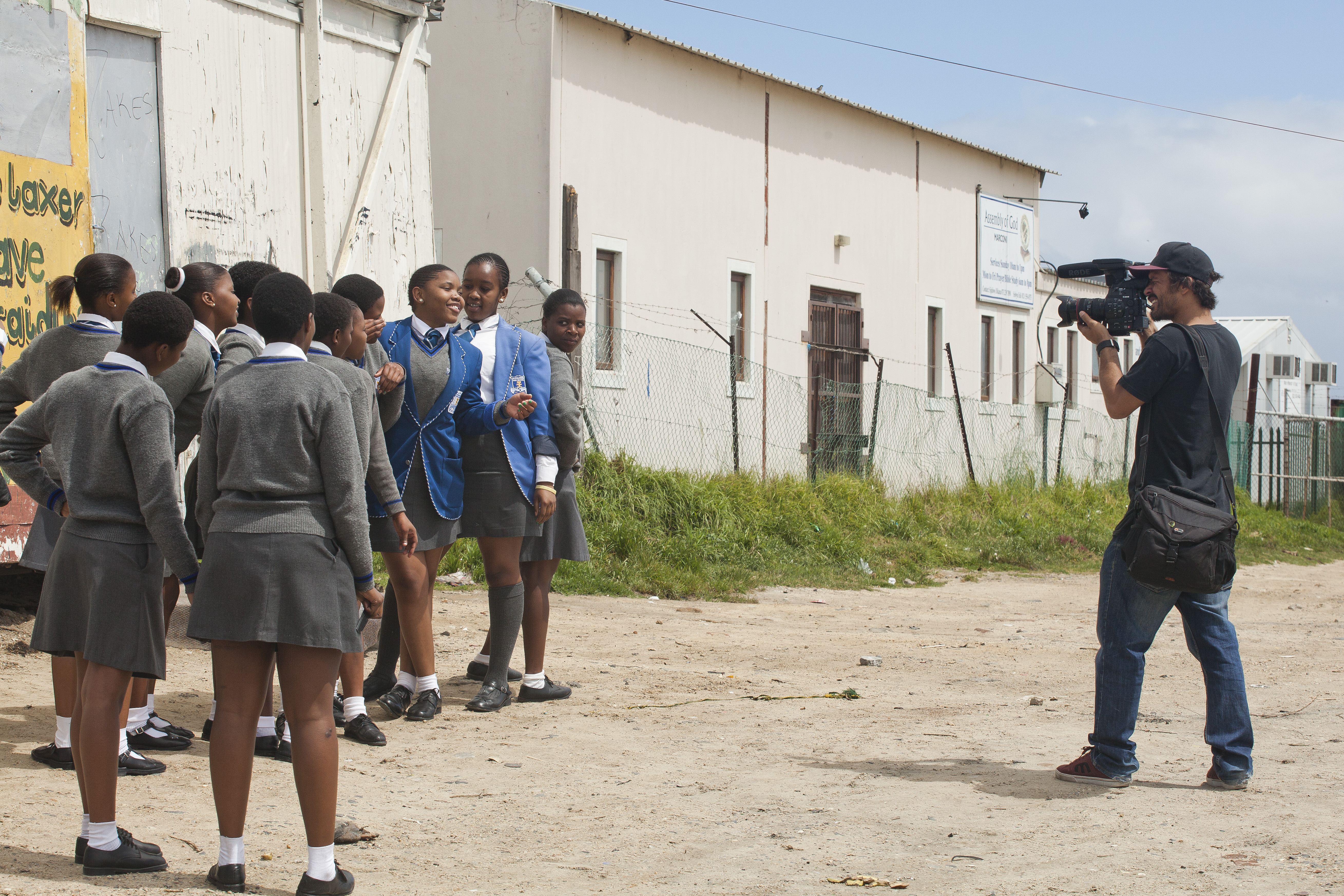|
Timeline Of The Yemeni Revolution (23 September – December 2011)
The following is a timeline of the 2011–2012 Yemeni revolution from 23 September through December 2011. The Yemeni revolution was a series of major protests, political tensions, and armed clashes taking place in Yemen, which began in January 2011 and were influenced by concurrent protests in the region. Hundreds of protesters, members of armed groups, army soldiers and security personnel were killed, and many more injured, in the largest protests to take place in the South Arabian country for decades. With President Ali Abdullah Saleh's sudden return to Yemen, clashes between government loyalists and defected security forces became increasingly frequent, while the Gulf Co-operation Council attempted to revive a peace agreement thought dead since May. During this phase in the uprising, violence continued between pro- and anti-Saleh factions, especially in the capital Sana'a and second city Ta'izz. Meanwhile, Saleh signed a GCC peace initiative endorsed by the United Nations ... [...More Info...] [...Related Items...] OR: [Wikipedia] [Google] [Baidu] |
Arab Spring
The Arab Spring () was a series of Nonviolent resistance, anti-government protests, Rebellion, uprisings, and Insurgency, armed rebellions that spread across much of the Arab world in the early 2010s. It began Tunisian revolution, in Tunisia in response to corruption and economic stagnation. From Tunisia, the protests initially spread to five other countries: Libya, Egypt, Yemen, Syria and Bahrain. Rulers were deposed (Zine El Abidine Ben Ali of Tunisia, Muammar Gaddafi of Libya, and Hosni Mubarak of Egypt all in 2011, and Ali Abdullah Saleh of Yemen in 2012) and major uprisings and social violence occurred, including riots, civil wars, or insurgencies. Sustained street demonstrations took place in Morocco, Iraq, Algeria, Lebanon, Jordan, Kuwait, Oman and Sudan. Minor protests took place in Djibouti, Mauritania, Palestine, Saudi Arabia and the Western Sahara. A major slogan of the demonstrators in the Arab world is ''Ash-shab yurid isqat an-nizam, ash-shaʻb yurīd isqāṭ an- ... [...More Info...] [...Related Items...] OR: [Wikipedia] [Google] [Baidu] |
Strike Action
Strike action, also called labor strike, labour strike in British English, or simply strike, is a work stoppage caused by the mass refusal of employees to Working class, work. A strike usually takes place in response to employee grievances. Strikes became common during the Industrial Revolution, when Labour economics, mass labor became important in factories and mines. As striking became a more common practice, governments were often pushed to act (either by private business or by union workers). When government intervention occurred, it was rarely neutral or amicable. Early strikes were often deemed unlawful conspiracies or anti-competitive cartel action and many were subject to massive legal repression by state police, federal military power, and federal courts. Many Western nations legalized striking under certain conditions in the late 19th and early 20th centuries. Strikes are sometimes used to pressure governments to change policies. Occasionally, strikes destabilize the r ... [...More Info...] [...Related Items...] OR: [Wikipedia] [Google] [Baidu] |
Yemeni Air Force
The Yemeni Air Force (YAF; ) is the air force branch of the Yemeni Armed Forces. It inherited its aircraft from the former states of North and South Yemen who were supported by the United States and the Soviet Union during the Cold War, respectively. However, numbers of its aircraft can not be confirmed but serviceability of these aircraft is low, as a result of most of the air force being destroyed by airstrikes during the Saudi Arabian-led intervention in the Yemeni Civil War. History Early Yemeni military flying After being confronted by British air power during several conflicts in the 1920s, Imam Yahya, the King of Yemen, sought support from Italy in order to acquire aircraft for his country. In January 1926, an Italian was contracted to deliver six aircraft, the first three of which arrived in April. However, these were found to be in a poor state. After the Imam complained about this issue to the Italians, they agreed to provide Yemen with some better aircraft. In Au ... [...More Info...] [...Related Items...] OR: [Wikipedia] [Google] [Baidu] |
Republican Guard (Yemen)
The Yemeni Republican Guard (YRG; ), formerly known as the Strategic Reserve Forces (), was an elite praetorian guard unit in the Yemen Army. It was formerly commanded by the former President Ali Abdullah Saleh's son, Ahmed Saleh, and was most notably involved in the Yemeni Revolution of 2011, fighting in favour of the Saleh government. The YRG was traditionally relied on as the backbone of Saleh's regime, and was the best armed and trained in the armed forces. Yemen's Defence Ministry both overlooked and engaged in corruption with the YRG in order to ensure the loyalty of the unit's leadership. History The Republican Guard was raised in 1964 by Yemen's Republican and Nasserist regime based on the Egyptian Republican Guard model of a powerful, heavily armored formation defending the capital city against internal threats. The Guard was initially created and trained by Egyptian and Soviet advisors. The Guard was supposed to be a symbol of the Republican State. Recruits we ... [...More Info...] [...Related Items...] OR: [Wikipedia] [Google] [Baidu] |
Law Enforcement In Yemen
Yemen's primary and most feared internal security and intelligence-gathering force is the Political Security Organization (PSO) جهاز الأمن السياسي, led by military officers; it reports directly to the president and operates its own detention centers.Country profile: Yemen (August 2008). There are an estimated 150,000 personnel in the PSO. The |
Yemen Army
Yemen, officially the Republic of Yemen, is a country in West Asia. Located in South Arabia, southern Arabia, it borders Saudi Arabia to Saudi Arabia–Yemen border, the north, Oman to Oman–Yemen border, the northeast, the south-eastern part of the Arabian Sea to the east, the Gulf of Aden to the south, and the Red Sea to the west, sharing maritime boundary, maritime borders with Djibouti, Eritrea, and Somalia across the Horn of Africa. Covering roughly 455,503 square kilometres (175,871 square miles), with a coastline of approximately , Yemen is the second largest country on the Arabian Peninsula. Sanaa is its constitutional capital and largest city. Yemen's estimated population is 34.7 million, mostly Arabs, Arab Muslims. It is a member of the Arab League, the United Nations, the Non-Aligned Movement and the Organisation of Islamic Cooperation. Owing to its geographic location, Yemen has been at the crossroads of many civilisations for over 7,000 years. In 1200 BCE, the Sab ... [...More Info...] [...Related Items...] OR: [Wikipedia] [Google] [Baidu] |
Alliance Of Yemeni Tribes
The Alliance of Yemeni Tribes (), sometimes referred to as the Yemeni Tribes' Alliance, was an alliance of tribes in Yemen opposed to the government of President Ali Abdullah Saleh. It was formed on 30 July 2011 amidst the civil uprising in Yemen to defend anti-government protesters. Its leader, Sheikh Sadiq al-Ahmar of the Hashid tribal federation, stated his intention to remove Saleh and his sons from power in his capacity as head of the Alliance. The Alliance was headed up by a 116-member "consultative council". Composition The exact strength of the Alliance is unknown, but at the ceremony in Sanaa that marked its inception, between 500 and 600 tribal leaders and chiefs attended. The Hashid, which were in revolt against the government despite being the tribe of Saleh himself, are known to have been part of the coalition, as are the Bakil, Yemen's largest tribal confederation and one whose members clashed with government loyalists in Arhab District during the uprising. Re ... [...More Info...] [...Related Items...] OR: [Wikipedia] [Google] [Baidu] |
Students
A student is a person enrolled in a school or other educational institution, or more generally, a person who takes a special interest in a subject. In the United Kingdom and most commonwealth countries, a "student" attends a secondary school or higher (e.g., college or university); those in primary or elementary schools are "pupils". Africa Nigeria In Nigeria, education is classified into four systems known as a 6-3-3-4 system of education. It implies six years in primary school, three years in junior secondary, three years in senior secondary and four years in the university. However, the number of years to be spent in university is mostly determined by the course of study. Some courses have longer study lengths than others. Those in primary school are often referred to as pupils. Those in university, as well as those in secondary school, are referred to as students. The Nigerian system of education also has other recognized categories like the polytechnics and colleges of ... [...More Info...] [...Related Items...] OR: [Wikipedia] [Google] [Baidu] |
Houthis
The Houthis, officially known as Ansar Allah, is a Zaydism, Zaydi Shia Islamism, Shia Islamist political and military organization that emerged from Yemen in the 1990s. It is predominantly made up of Zaydi Shias, with their namesake leadership being drawn largely from the Al-Houthi family, Houthi tribe. The group has been a central player in Yemeni civil war (2014–present), Yemen's civil war, drawing widespread international condemnation for its Human rights, human rights abuses, including targeting civilians and using child soldiers. The movement is designated as a terrorist organization by some countries. Iran–Houthi relations, The Houthis are backed by Iran, and they are widely considered part of the Iranian-led "Axis of Resistance". Under the leadership of Zaydi religious leader Hussein al-Houthi, the Houthis emerged as an opposition movement to Yemen president Ali Abdullah Saleh, whom they accused of corruption and being backed by Saudi Arabia and the United States. ... [...More Info...] [...Related Items...] OR: [Wikipedia] [Google] [Baidu] |
South Yemen Movement
The Southern Movement (), sometimes known as the Southern Separatist Movement, or South Yemen Movement, or Aden Movement, and colloquially known as al-Hirak (), is a political movement and paramilitary organization active in the south of Yemen since 2007, demanding secession from the Republic of Yemen and a return to the former independent state of South Yemen. At present, its best-known political offshoot, the Southern Transitional Council led by Aidarus al-Zoubaidi, is the de facto leadership across many provinces of the south. History 1994 Yemen Civil War After the union between South Yemen and North Yemen on May 22, 1990, a civil war broke out in 1994. This came after leaders of the former independent southern state declared an end to the unity deal amidst an alleged power-grabbing usurp by their northern counterparts. The result was a swift defeat of the weakened southern forces and the expulsion of most of its leaders out of Yemen, including the former Secretary-Ge ... [...More Info...] [...Related Items...] OR: [Wikipedia] [Google] [Baidu] |
Joint Meeting Parties
Before the Yemeni Revolution in 2011 and the following civil war, Yemen was a one party dominant state in which the General People's Congress (GPC) held power. Legal status Yemen's Political Parties Law mandates that political parties be viable national organizations comprising at least 75 founders and 2,500 members and not restrict membership to a particular region.Country profile: Yemen (August 2008). The government provides financial support to political parties, including a stipend for newspaper p ... [...More Info...] [...Related Items...] OR: [Wikipedia] [Google] [Baidu] |
Hashid
The Hashid (; Musnad: 𐩢𐩦𐩵𐩣) is a tribal confederation in Yemen. It is the second or third largest – after Bakil and, depending on sources, Madh'hij"Yemen's tribal confederations" The National ''by Hugh Naylor'', 27 February 2012 Al-Monitor, 30 April 2014. – yet generally recognized as the strongest and most influential. According to medieval Yemeni genealogies, Hashid and Bakil were the sons of Jashim bin Jubran bin Nawf Bin Tuba'a bin Zayd bin Amr bin [...More Info...] [...Related Items...] OR: [Wikipedia] [Google] [Baidu] |




